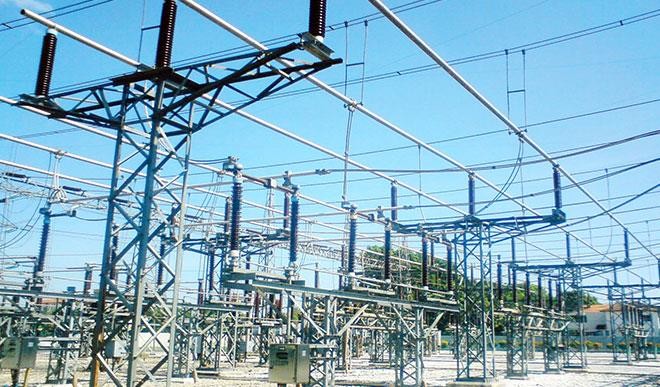
The power sector in Nigeria is one that is evolving. There are over 24 power plants in the country comprising private and public utilities.
With the recent increase in the unit price of electricity by about 65 per cent, the industry participants said they are determined to ensure higher rise in power supply from an average 2,500megawatts (mw) in February, 2015 to around 5,074mw peak generation early February 2016.
While this target has been set, the key issue affecting power generation is the over-reliance of the sector on gas-fired power plants. Statistics at the Nigerian Electricity Regulatory Commission (NERC) shows that about 70 per cent of the power generating plants are dependent on gas-to-power fuel.
The implication, experts say, is that when there is a hit at the gas pipelines mostly in the Niger Delta region by vandals, it is bound to have severe effect on power supply nationwide, as almost 50 per cent of electricity from the feeding plants usually goes off.
The annual report of the Nigerian National Petroleum Corporation (NNPC) released recently indicates than an average of 75 per cent of the electricity consumed in 2015 was produced from gas-fired power plants.
It showed that August 2015 had the highest gas supply to the power plants as about 812 million standard cubic feet daily (mmscfd) was delivered to the power plants to produce 3,472mw. This represents 87 per cent of the whole power generation as the hydropower plants – Kainji/Jebba and Shiroro plants contributed only 13 per cent electricity to the national grid.
The lowest month of gas supply to the plants was in May 2015 when 533mmscfd gas was delivered to them to produce 2,219mw. Daily Trust on Sunday reports that the latter part of May was terrible for electricity consumers nationwide as there was a national outage for about four days due to the cut in gas supply resulting from an industrial action embarked upon by oil and gas companies over multiple backlogs of debt.
The month was also the handover period in the federal government which witnessed some vandalisation across gas pipelines in Gbaramatu Kingdom of Delta State resulting in the all-time low of 2,000mw in the grid.
Although experts and government officials have said more gas supply to the power plants would increase electricity supply, an official who spoke with our reporter said it may not always be the case.
Giving his reason, the source said some Generation companies (Gencos) are still under maintenance and may not be operating at full blast and that could result in operational deficiency even with enough gas supply to them.
The NNPC statistical report corroborates this. July last year recorded the highest power supply from the gas-powered stations. Power plants then generated 3,489mw after consuming gas capacity of 786mmscfd, which was less than the 812mmscfd used to generate the 3,472mw the next month.
More so, while 728mmscfd gas was delivered to the power plants to produce 2,869mw in October, a slight increase in gas fuel of 734mmscfd to the stations in November generated 233mw more than the previous output.
Similarly in December, 722mmscfd gas fuel was consumed to deliver 3,004mw of electricity. The total supply in 2015 resulted in an average of 694mmscfd gas fuel for the generation of 2,957mw electricity.
Industry officials attributed the downward trend of power supply in December and January 2016 to vandal activities. The Minister of Power, Works and Housing, Babatunde Fashola, in a reaction to the recent attacks on the Escravos gas pipeline along Delta-Bayelsa axes said the country loses about N470 million daily on gas sales and power shortage during the disrupted period.
The incident resulted in the shutdown of the 600megawatts (mw) Olorunsogo plant in Ogun State, and other plants in the western axis with the grid losing over 1,000mw due to the high reliance on gas-fired plants.
“The sabotaged gas pipeline, which contributes to the Escravos Lagos Pipeline System (ELPS), has led to a loss of 160mmsfcd of gas daily. At a cost of $2.50 per thousand scf, this loss means N788million (about $400,000) loss to the country daily in gas volume,” a statement from his office said.
It said the loss is in addition to losses to be incurred daily from affected power generation of N391.680million daily, amounting to an estimated N470.479million. Evaluating the cost of repairs for the pipeline, the ministry said, may cost about N120million.
Recall that there were six critical incidentd of vandalism between December 2014 and February 2015 affecting the Trans Forcados Pipeline and the Escravos pipeline in Delta and Bayelsa states. The incident caused a loss of 1,100mmscfd resulting in a loss of over 4,000mw, industry experts said.
The statement said the NNPC is forming a committee that include the police and the Joint Task Force (JTF), along with community vigilante groups to secure more pipelines. But an insider said that cannot be sustained as soldiers cannot be deployed completely across the length and breadth of the Niger Delta to monitor the complex network of pipelines in the face of the security challenges in the North-east.
In the meantime, the President, Power Consumer Network, Bar. Kunle Olubiyo, has tasked government on diversifying the power generation strategies to quickly include more coal-to-power and hydropower plants.
He noted that there is much hydropower on ground that could be sped up to give power supply a boost so that in the case of a gas pipeline burst, supply could still be sustained in the long run.
The Niger Delta Power Holding Company (NDPHC), after closing the anticipated sales of the 10 National Integrated Power Plants (NIPPs) gas-fired plants this year, said it would divest to the hydropower plants.
It has plans to partly finance the flag-off of the 3050mw Mambilla hydropower dam in Taraba State and about 11 other small and medium hydropower projects with most of them sited in the northern region.
In the meantime, actual power supply has been at 4,100mw on the national grid with the impact of power rationing being felt heavily by electricity consumers nationwide. The Transmission Company of Nigeria (TCN) last week announced increase in peak generation to a historic 5,000mw.
The minister, Babatunde Fashola and the Distribution companies (Discos) have called on consumers to cooperate with them and stop the industrial action started last Monday despite the hike in electricity tariff saying power was improving.
A quick check however revealed that the 5,000mw generation did not translate to any increase in supply hour across the major cities in Nigeria. Rather, power rationing has continued across the major Discos.
The daily statistics of last Wednesday February 10, 2016 from the Transmission’s National Control Centre (NCC) in Osogbo, Osun State shows that the peak generation has dropped by 526mw from the 5,074mw attained just within seven days.
The peak generation last Wednesday was 4,548mw but the actual average energy sent out was 4,021megawattshours/hour (mwh/h). However, the capacity of the Gencos has risen significantly to 6,457mw this year.
An official of TCN said the 5,000mw peak generation did not last enough and that even at 4,500mw, the Discos’ network would hardly carry the load, hence the rationing and load shedding being experienced by customers.
The expert, who was not authorised to speak to the press, said government would have to press on the Discos to invest more in their networks by procuring more transformers, poles and cables so their networks can efficiently absorb more power this year, while they continue the customer metering process.

 Join Daily Trust WhatsApp Community For Quick Access To News and Happenings Around You.
Join Daily Trust WhatsApp Community For Quick Access To News and Happenings Around You.


